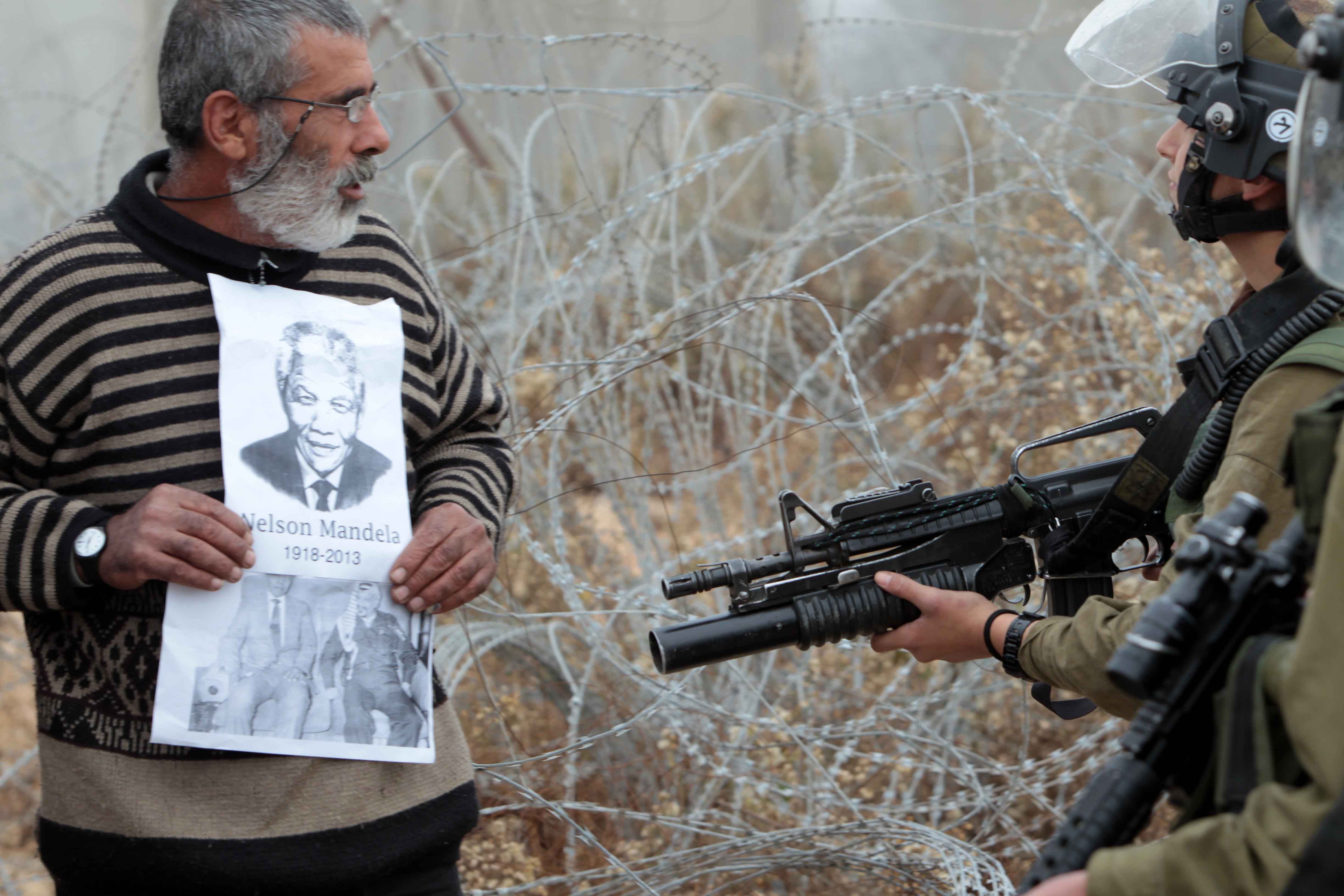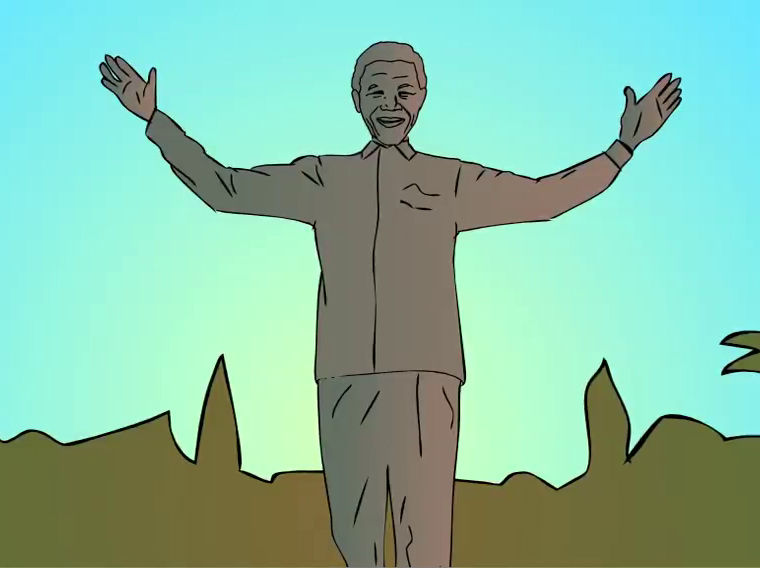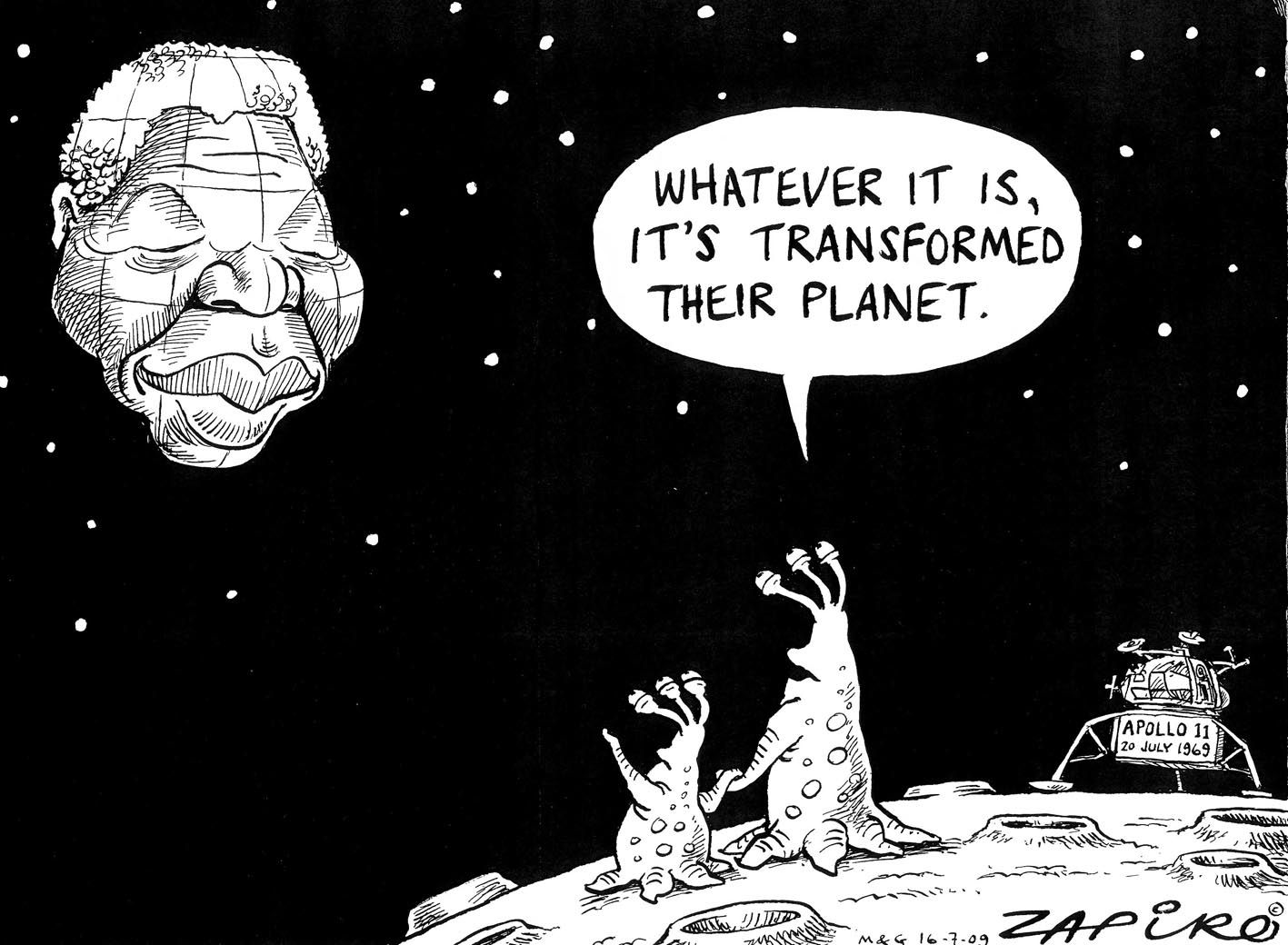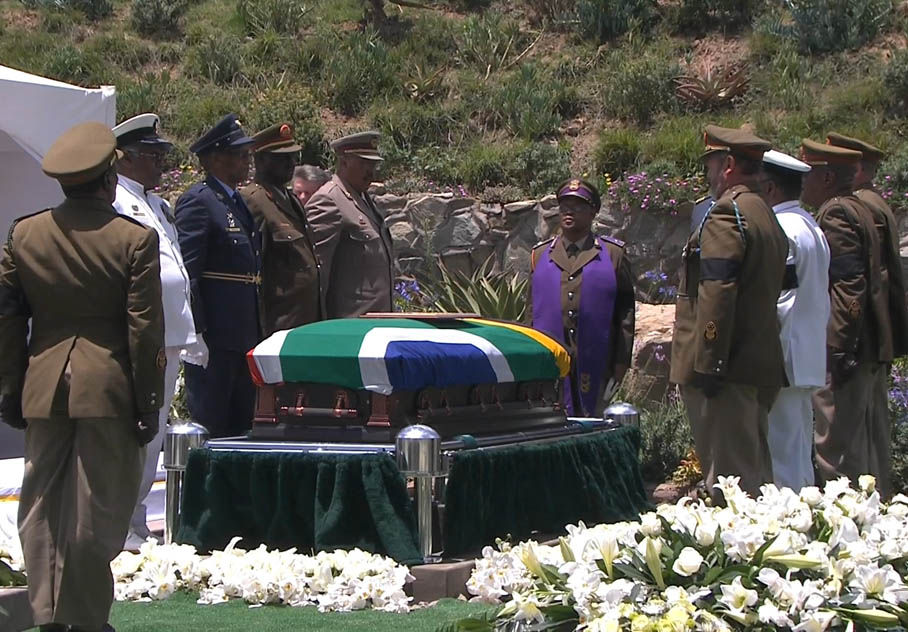
The world pays tribute to Mandela (slideshow)
As South Africans come to terms with the loss of former president Nelson Mandela, the rest of the world bids farewell to Madiba.

Pimples: Saving Madiba's rabbit (video)
Gwede, Mac and Blade try their best to stop the rabbit from whispering in Mandela's ear. But the elusive animal has some tricks up its sleeve.

Zapiro's best Madiba cartoons (slideshow)
From his toughest moments to his most triumphant, Madiba has been an inspiration. Here are some of our favourite Zapiro cartoons about him from 1994 to 2013.

Mandela: SA's greatest son laid to rest (slideshow)
The world watched as Nelson Mandela was finally laid to rest in his hometown of Qunu following a dignified and moving funeral ceremony on Sunday.
Never stop unless the roadkill moves -- a pretty good rule of thumb when driving inland through the Eastern Cape's manic main-road towns.
Places such as Idutywa, Butterworth and Mthatha are in desperate need of beautification and there is rarely any architectural marvelling to be done: anonymity and ugliness are characteristic in the rundown older buildings and the newer consumerist monoliths.
Testaments to Bantustan spatial planning, these pseudo-urban sprawls retain the inchoate feel of being laid out by a blind taxi driver in a bad mood.
The distinction between road and pavement -- tenuous at the best of times in the Eastern Cape -- becomes even less discernable as the region's entire population (dogs and livestock included) appears to converge on a single pot-holed road. It creates something of a witch's brew of obstacles.
As a traveller from KwaZulu-Natal one must adapt quickly in the Eastern Cape.
So telling Mthatha locals that their town's tourist offering is as non-existent as Nongqawuse's 19th-century prophecy (that the ancestors would shower people with a bountiful harvest if crops and cattle were destroyed) is not recommended.
Besides raising their ire, one quickly learns that amadlozi, the isiZulu word for ancestors, actually means "potent water" or "sperm" in isiXhosa.
One also quickly learns of the Nelson Mandela National Museum in Mthatha. In the Bhungu Building in Mthatha's CBD, the place is a repository of thousands of gifts given to former state president, Nelson Mandela, since his release from prison in 1990.
And there are several bizarre offerings, including a richly brocaded camel saddle. Sadly, the exhibition is so poorly captioned that one is unable to trace the origins of the saddle, and other gifts exhibited.
Museum manager Khwezi Mpumlwana says the saddle was "from one of the governments in the Middle-East", but he isn't sure which one.
"Many of the gifts came from the office of the president to the museum via the Department of Arts and Culture and we have had a few conflicting stories about where some have come from so, to be safe, we haven't taken a guess," says Mpumlwana on the poor data-capturing.
Regardless, the exhibit does provide a guide, perhaps, for what not to get a man who has everything.
There is, for example, a flat stone that somebody felt resembled Mandela's own face. Which it does. If one squints.
Most of the gifts -- especially the perfunctory ones, like a silver plate engraved with the American presidential seal and the names of Bill and Hillary Clinton -- were received on official state visits. There are many replica ships, footstools and trunks.
According to Professor Jakes Gerwel, director general of Mandela's office when he was president, Madiba accepted the gifts on behalf of the people of South Africa, "not personally". That, perhaps more than Graça Machel's disinclination to extend shelf space at home, is the reason many of the gifts found their way to the museum.
There are also two corridors with several paintings from schoolchildren and photographs, such as Giles Ridley's snap of Mandela addressing the country's first democratic parliament.
Some of the many awards given to Mandela over the years are included, among them the Lenin Peace Prize, the Unesco Peace Prize, the WEB Du Bois International medal and the OnenessPeace:Earth-Summit-Transcendence-Fragrance-Award.
And poignant gifts too. There is another stone. Only this one was found in the wreckage of an atomic bomb, with a note to Mandela pleading for peace from the people of the Japanese city of Hiroshima.
A simple plaque from the people of Palestine is stored in a felt giftbox. On the inside of the box, scrawled in blue ballpoint with a child's hand, are the words: "Wishing you longevity and prosperity, as well as success for your people." It is signed "Mahmoud Abboushi, Jenin, Palestine, 18 July 1997".
The museum was opened on February 11 2000, a decade to the day that Mandela was released from prison. The Bhungu Building itself dates back to the 1930s and was initially used by the United Transkei General Council, an "elected body going back to 1894".
With the implementation of the Bantustan system in 1963, it became the seat of the Transkei homeland parliament before being used by the Kei District Council in 1994 as its local legislature.
Mandela's life story is told in what used to be the main legislature. And, on a lucky day, while wandering through the multimedia exhibition, one can be serenaded by one of the several primary school tour groups that frequent the museum.
Mandela's autobiography, A Long Walk to Freedom, forms the backbone of the exhibition, with quotes from various stages of his life fleshed out by video interviews with family, clips of events such as a television interview during the Rivonia Trial or his inauguration speech in 1994.
There are personal family photographs, struggle memorabilia such as copies of the New Age newspaper and anti-apartheid badges and T-shirts. A 1981 list of films watched by Robben Island prisoners reflects tastes ranging from Play Misty for Me to The Taking of Pelham 123.
The essence of a deeply reflective, principled man is palpable in this room. It is an island in the swirl of moral compromise and political expediency, which one feels all around outside.

